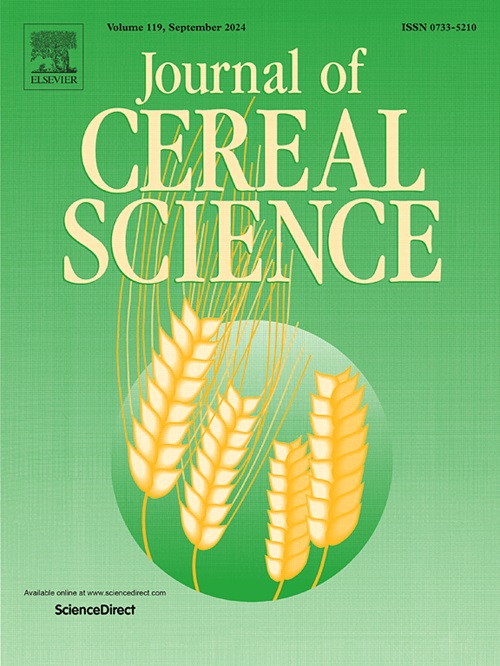Ultrasonic-assisted alkali extraction of quinoa polysaccharides: Yield and structural characterization
IF 3.9
2区 农林科学
Q2 FOOD SCIENCE & TECHNOLOGY
引用次数: 0
Abstract
Given that extraction methods affect the structural and functional properties of polysaccharides, four different extraction techniques, hot water extraction (HWE), alkali extraction (AE), ultrasound-assisted extraction (UE), and ultrasound-assisted alkali extraction (UAE), were employed to extract quinoa polysaccharides, and their yield, structural characteristics, and morphology were compared using a range of chemical and instrumental analysis techniques. The results revealed that UAE achieved the highest yield of quinoa polysaccharides at 7.13%, surpassing the other three methods. Particle size analysis showed polysaccharides ranged from 301 to 693 nm by four methods. Molecular weight analysis demonstrated that polysaccharides extracted by UE and UAE possessed higher molecular weights than those extracted by AE and HWE. Additionally, the viscosity of polysaccharides decreased as molecular weight decreased. Furthermore, the study found no evidence of triple-helical structures in polysaccharide fractions extracted by the four methods. Morphologically, all extracted polysaccharides exhibited distinct features, and their functional group characteristics were comparable. Notably, polysaccharides extracted by AE contained a minor amount of protein. Overall, UAE emerges as a promising extraction method based on the yield, purity, and structural characteristics of quinoa polysaccharides. These findings provide a robust experimental basis for understanding quinoa polysaccharide extraction, utilization, and potential applications in product development.
超声辅助碱提取藜麦多糖:得率及结构表征
考虑到提取方法会影响藜麦多糖的结构和功能特性,采用热水提取(HWE)、碱提取(AE)、超声辅助提取(UE)和超声辅助碱提取(UAE) 4种不同的提取技术提取藜麦多糖,并利用一系列化学和仪器分析技术对其产率、结构特征和形态进行了比较。结果表明,UAE法的藜麦多糖得率最高,达7.13%,优于其他3种方法。四种方法对多糖的粒度分析表明,多糖的粒径范围在301 ~ 693 nm之间。分子量分析表明,UE和UAE法提取的多糖分子量高于AE和HWE法提取的多糖。多糖的黏度随分子量的减小而减小。此外,本研究未发现四种方法提取的多糖中存在三螺旋结构的证据。从形态学上看,各多糖具有不同的特征,其官能团特征具有可比性。值得注意的是,AE提取的多糖含有少量的蛋白质。综上所述,基于藜麦多糖的收率、纯度和结构特征,UAE是一种很有前途的提取方法。这些发现为了解藜麦多糖的提取、利用及其在产品开发中的潜在应用提供了坚实的实验基础。
本文章由计算机程序翻译,如有差异,请以英文原文为准。
求助全文
约1分钟内获得全文
求助全文
来源期刊

Journal of Cereal Science
工程技术-食品科技
CiteScore
7.80
自引率
2.60%
发文量
163
审稿时长
38 days
期刊介绍:
The Journal of Cereal Science was established in 1983 to provide an International forum for the publication of original research papers of high standing covering all aspects of cereal science related to the functional and nutritional quality of cereal grains (true cereals - members of the Poaceae family and starchy pseudocereals - members of the Amaranthaceae, Chenopodiaceae and Polygonaceae families) and their products, in relation to the cereals used. The journal also publishes concise and critical review articles appraising the status and future directions of specific areas of cereal science and short communications that present news of important advances in research. The journal aims at topicality and at providing comprehensive coverage of progress in the field.
 求助内容:
求助内容: 应助结果提醒方式:
应助结果提醒方式:


